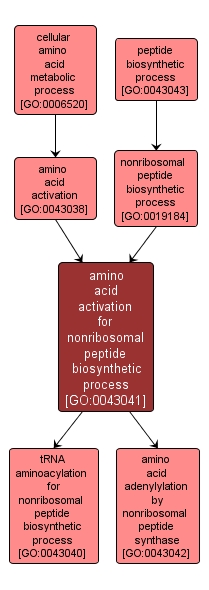GO TERM SUMMARY
|
| Name: |
amino acid activation for nonribosomal peptide biosynthetic process |
| Acc: |
GO:0043041 |
| Aspect: |
Biological Process |
| Desc: |
Activation of an amino acid for incorporation into a peptide by a nonribosomal process. |
Synonyms:
- nonribosomal amino acid activation
|
|

|
INTERACTIVE GO GRAPH
|














